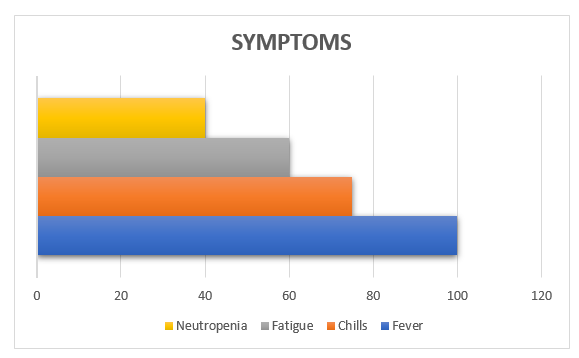Prevalence and clinical significance of saprophytic bacteria in bloodstream infections among cancer patients
Colonizers in BSI from cancer patients
Keywords:
Bloodstream infection, Saprophytic organism, Cancer patientsAbstract
Introduction: Bloodstream infections (BSIs) in cancer patients are associated with high morbidity and mortality. While common pathogens are well-studied, the role of saprophytic bacteria in BSIs among this population is less understood. To investigate the prevalence and clinical significance of saprophytic pathogens causing BSIs in cancer patients at a tertiary care center.
Materials and Methods: This retrospective study included all 200 consecutive adult cancer patients with suspected sepsis over four months. Blood cultures were processed on an automated BACTEC system. Subculture and identification were performed using standard microbiological techniques and the Vitek 2 system. Antimicrobial sensitivity was performed as per CLSI guidelines.
Results: The blood culture positivity in these patients was 79% (158/200). Of the 158 positive blood cultures, 10.1% (16/158) were saprophytic pathogens. These included Enterococcus avium, Sphingomonas paucimobilis, Actinomyces meyeri, Kodamaea ohmeri, Elizabethkingia meningoseptica, Aeromonas hydrophila, Achromobacter xylosoxidans, Stenotrophomonas maltophilia, Pantoea dispersa, and Burkholderia pseudomallei. The overall 30-day mortality rate for patients with saprophytic pathogen BSIs was 20%.
Conclusion: Saprophytic bacteria have gained recognition as possible human pathogens, especially in immunocompromised patients including cancer patients. Such high-risk patients should be put on empiric antibiotics to improve patient outcomes till the time clinical significance is established.

Additional Files
Published
How to Cite
License
Copyright (c) 2024 Sheetal Goenka, Wanshisha Wanswett, Manisha Jain, Poonam Loomba, Abha Sharma, Shivani Tyagi

This work is licensed under a Creative Commons Attribution-NonCommercial 4.0 International License.
